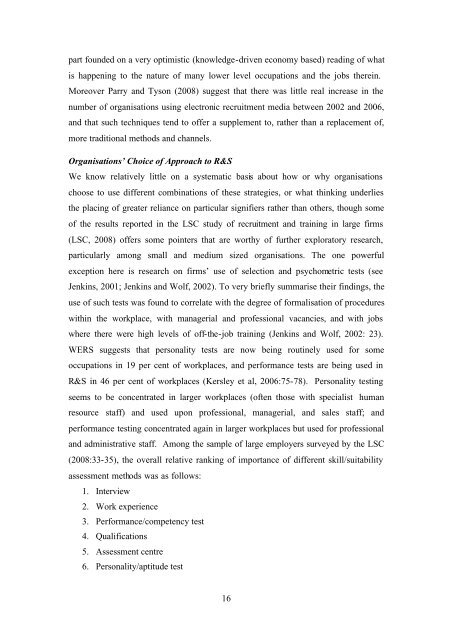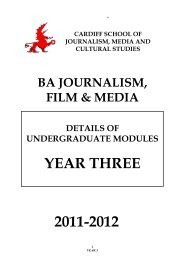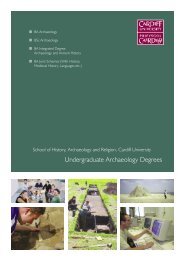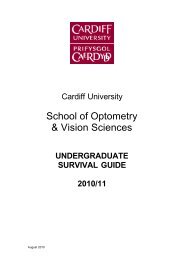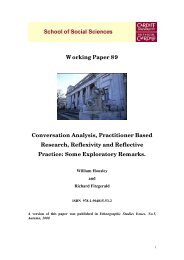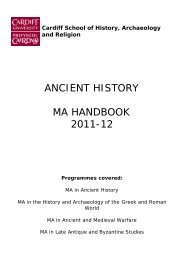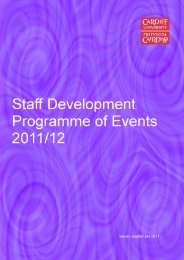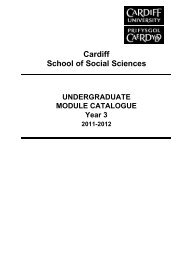Recruitment and Selection â the Great Neglected ... - Cardiff University
Recruitment and Selection â the Great Neglected ... - Cardiff University
Recruitment and Selection â the Great Neglected ... - Cardiff University
You also want an ePaper? Increase the reach of your titles
YUMPU automatically turns print PDFs into web optimized ePapers that Google loves.
part founded on a very optimistic (knowledge-driven economy based) reading of what<br />
is happening to <strong>the</strong> nature of many lower level occupations <strong>and</strong> <strong>the</strong> jobs <strong>the</strong>rein.<br />
Moreover Parry <strong>and</strong> Tyson (2008) suggest that <strong>the</strong>re was little real increase in <strong>the</strong><br />
number of organisations using electronic recruitment media between 2002 <strong>and</strong> 2006,<br />
<strong>and</strong> that such techniques tend to offer a supplement to, ra<strong>the</strong>r than a replacement of,<br />
more traditional methods <strong>and</strong> channels.<br />
Organisations’ Choice of Approach to R&S<br />
We know relatively little on a systematic basis about how or why organisations<br />
choose to use different combinations of <strong>the</strong>se strategies, or what thinking underlies<br />
<strong>the</strong> placing of greater reliance on particular signifiers ra<strong>the</strong>r than o<strong>the</strong>rs, though some<br />
of <strong>the</strong> results reported in <strong>the</strong> LSC study of recruitment <strong>and</strong> training in large firms<br />
(LSC, 2008) offers some pointers that are worthy of fur<strong>the</strong>r exploratory research,<br />
particularly among small <strong>and</strong> medium sized organisations. The one powerful<br />
exception here is research on firms’ use of selection <strong>and</strong> psychometric tests (see<br />
Jenkins, 2001; Jenkins <strong>and</strong> Wolf, 2002). To very briefly summarise <strong>the</strong>ir findings, <strong>the</strong><br />
use of such tests was found to correlate with <strong>the</strong> degree of formalisation of procedures<br />
within <strong>the</strong> workplace, with managerial <strong>and</strong> professional vacancies, <strong>and</strong> with jobs<br />
where <strong>the</strong>re were high levels of off-<strong>the</strong>-job training (Jenkins <strong>and</strong> Wolf, 2002: 23).<br />
WERS suggests that personality tests are now being routinely used for some<br />
occupations in 19 per cent of workplaces, <strong>and</strong> performance tests are being used in<br />
R&S in 46 per cent of workplaces (Kersley et al, 2006:75-78). Personality testing<br />
seems to be concentrated in larger workplaces (often those with specialist human<br />
resource staff) <strong>and</strong> used upon professional, managerial, <strong>and</strong> sales staff; <strong>and</strong><br />
performance testing concentrated again in larger workplaces but used for professional<br />
<strong>and</strong> administrative staff. Among <strong>the</strong> sample of large employers surveyed by <strong>the</strong> LSC<br />
(2008:33-35), <strong>the</strong> overall relative ranking of importance of different skill/suitability<br />
assessment methods was as follows:<br />
1. Interview<br />
2. Work experience<br />
3. Performance/competency test<br />
4. Qualifications<br />
5. Assessment centre<br />
6. Personality/aptitude test<br />
16


